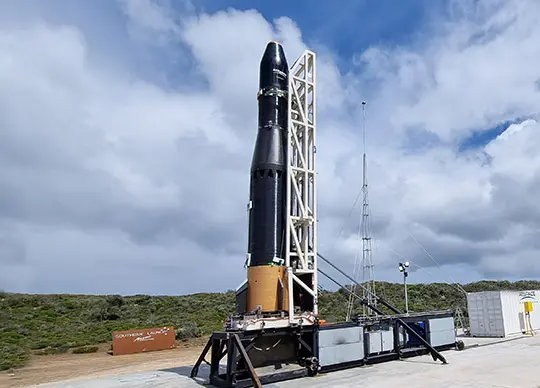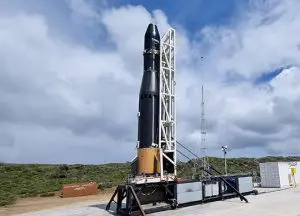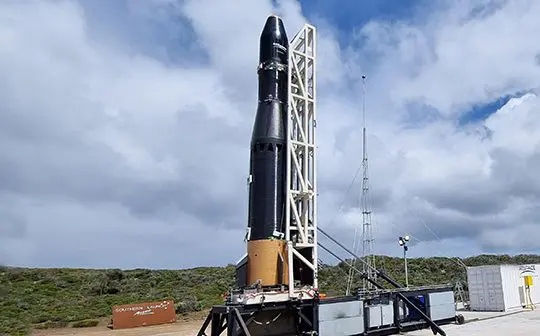

Image Caption: The VS03 rocket at the Whalers Way Orbital Launch Complex.
ATSpace has confirmed it is ready to launch two of its Kestrel I rockets before the end of the year after a planned launch in November was postponed due to severe weather.
Under permissions granted by the Australian Space Agency, Southern Launch and AT Space will aim to launch both the VS02 and VS03 missions from the Whalers Way Orbital Launch Complex in December.
The potential launch of two consecutive missions showcases the world-class capabilities of the Southern Launch Whalers Way Orbital Launch Complex. Southern Launch CEO Lloyd Damp says, ‘We have proven over multiple launch campaigns that we can deliver a world-class launch facility for our customers. We are excited to assist ATSpace to deliver two consecutive, safe sub-orbital launches to space.’
ATSpace made the decision to attempt to launch the two consecutive missions after investigations revealed that the lightning damage to the VS03 rocket was not as severe as first thought.
Dr YenSen Chen, Chief Executive Officer of ATSpace explains ‘We were very pleased to discover that the repairs required to the VS03 rocket were minimal. We always planned to launch the VS02 rocket in 2022 and it is fantastic that we can attempt to combine the two missions to be consecutive launches.’
Safety is always a priority for Southern Launch and the preparations for the potential consecutive missions has involved the same rigorous approvals from regulatory bodies at a local, State and Federal level.
Southern Launch has worked extensively with the South Australian Country Fire Service (CFS) to prepare a launch site that exceeds regulatory requirements. The CFS has thoroughly assessed the safety of launch activities and has provided permits for Southern Launch to conduct the launches during fire ban season.
Lloyd Damp says, ‘We have invested significantly in developing in-house firefighting capability and fire suppression systems for the launch pad at the Whalers Way Orbital Launch Complex. The launch trajectory for both potential missions is over the Southern Ocean which further minimises the risk of fire.’





